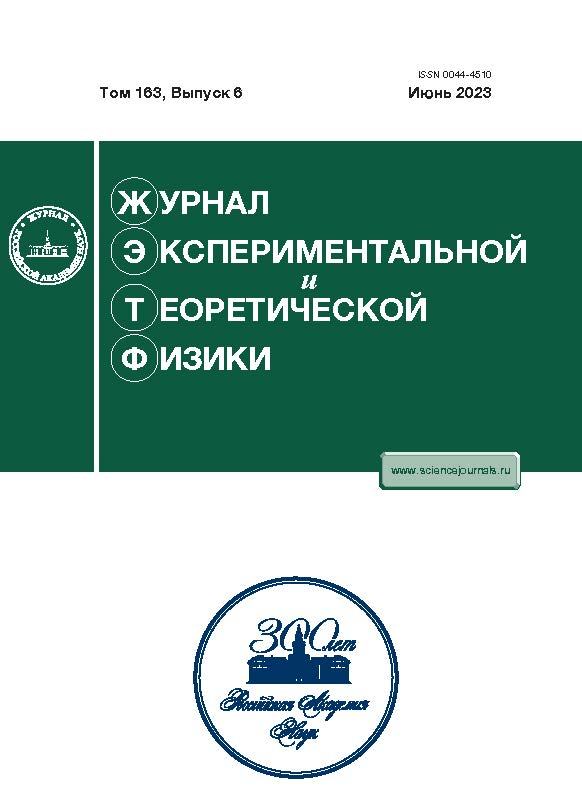Influence of Impurities on the Oxygen Adsorption on the Ti5Si3(0001) Surface
- Autores: Bakulin A.V1, Chumakova L.S1, Kul'kova S.E1,2
-
Afiliações:
- Institute of Strength Physics and Materials Science, Siberian Branch, Russian Academy of Sciences
- National Research Tomsk State University
- Edição: Volume 163, Nº 6 (2023)
- Páginas: 796-805
- Seção: Articles
- URL: https://rjpbr.com/0044-4510/article/view/653498
- DOI: https://doi.org/10.31857/S0044451023060056
- EDN: https://elibrary.ru/DEGXME
- ID: 653498
Citar
Texto integral
Resumo
The influence of simple and transition metal impurities, as well as interstitial impurities (B, C, and N), on the oxygen adsorption on the Ti5Si3 titanium silicide surface has been studied using the of projector augmented wave method within the electron density functional theory. It has been shown that titanium-substituting impurities belonging to the latter halves of the 3d–5d periods cause most significant changes in the adsorption energy. In addition, simple metals and interstitial impurities reduce the oxygen–surface interaction. By analyzing local electron densities of states, charge density difference distribution, charge transfer, and the overlap population of oxygen bonds to nearest-neighbor atoms, we have revealed special aspects of impurity influence on chemical bonding between the titanium silicide surface and oxygen. Factors responsible for an increase/decrease in the adsorption energy of oxygen on the doped surface are discussed. A correlation between the change in adsorption energy and the electronegativity of impurities has been found.
Sobre autores
A. Bakulin
Institute of Strength Physics and Materials Science, Siberian Branch, Russian Academy of Sciences
Email: bakulin@ispms.tsc.ru
634055, Tomsk, Russia
L. Chumakova
Institute of Strength Physics and Materials Science, Siberian Branch, Russian Academy of Sciences
Email: bakulin@ispms.tsc.ru
634055, Tomsk, Russia
S. Kul'kova
Institute of Strength Physics and Materials Science, Siberian Branch, Russian Academy of Sciences; National Research Tomsk State University
Autor responsável pela correspondência
Email: bakulin@ispms.tsc.ru
634055, Tomsk, Russia; 634050, Tomsk, Russia
Bibliografia
- H. Nowotny, in Electronic Structure and Alloy Chemistry of the Transition Elements, ed. by P. A. Beck, Intersci. Publ., New York (1963), p. 179.
- S. P. Murarka, Silicides for VLSI Applications, Academic Press, New York (1983).
- L. J. Chen, Silicide Technology for Integrated Circuits, IEE, London (2009).
- J. Derrien, J. Chevrier, V. Le Thanh et al., Appl. Surf. Sci. 56, 382 (1992).
- D. L. Anton, D. M. Shah, D. N. Duhl et al., JOM 41, 12 (1989).
- R. L. Fleischer, J. Mater. Sci. 22, 2281 (1987).
- D. M. Shah, D. Berczik, D. L. Anton et al., Mater. Sci. Eng. A 155, 45 (1992).
- R. L. Fleischer, D. M. Dimiduk, and H. A. Lipsitt, Annu. Rev. Mater. Sci. 19, 231 (1989).
- R. Swad'zba, L. Swad'zba, B. Mendala et al., Intermetallics 87, 81 (2017).
- J. Huang, F. Zhao, X. Cui et al., Appl. Surf. Sci. 582, 152444 (2022).
- Z. Li and W. Gao, in Intermetallics Research Progress, ed. by Y. N. Berdovsky, Nova Sci. Publ., New York (2008), p. 1.
- Z. Tang, J. J. Williams, A. J. Thom et al., Intermetallics 16, 1118 (2008).
- X. Long and Z. Chong, Trans. Nonferrous Met. Soc. China 4, 25 (1994).
- M. Ekman and V. Ozolins, Phys. Rev. B 57, 4419 (1998).
- M. K. Niranjan, Mater. Res. Express 2, 096302 (2015).
- C. Colinet, W. Wolf, R. Podloucky et al., Appl. Phys. Lett. 87, 041910 (2005).
- G. Shao, Acta Mater. 53, 3729 (2005).
- T. Wang, J. A. Chen, X. Ling et al., Mod. Phys. Lett. B 20, 343 (2006).
- C. Colinet and J. C. Tedenac, Intermetallics 18, 1444 (2010).
- H. Y. Wang, W. P. Si, S. L. Li et al., J. Mater. Res. 25, 2317 (2010).
- P. F. Zhang, Y. X. Li, and P. K. Bai, IOP Conf. Series: Mater. Sci. Eng. 284, 012013 (2017).
- J. J. Williams, Y. Y. Ye, M. J. Kramer et al., Intermetallics 8, 937 (2000).
- J. J. Williams, M. J. Kramer, M. Akinc et al., J. Mater. Res. 15, 1773 (2000).
- A. J. Thom, V. G. Young, and M. Akinc, J. Alloys Compd. 296, 59 (2000).
- Z. Tang, A. J. Thom, and M. Akinc, Intermetallics 14, 537 (2006).
- Л. С. Чумакова, А. В. Бакулин, С. Е. Кулькова, ЖЭТФ 161, 874 (2022).
- L. S. Chumakova, A. V. Bakulin, S. Hocker et al., Metals 12, 492 (2022).
- A. V. Bakulin, L. S. Chumakova, and S. E. Kulkova, Intermetallics 146, 107587 (2022).
- P. E. Bl¨ochl, Phys. Rev. B 50, 17953 (1994).
- G. Kresse and D. Joubert, Phys. Rev. B 59, 1758 (1999).
- J. P. Perdew, K. Burke, and M. Ernzerhof, Phys. Rev. Lett. 77, 3865 (1996).
- P. Villars and L. D. Calvert, Pearson's Handbook of Crystallographic Data for Intermetallic Phases, ASM, Metals Park, OH (1985).
- A. V. Bakulin, S. Hocker, S. Schmauder et al., Appl. Surf. Sci. 487, 898 (2019).
- W. M. Haynes, CRC Handbook of Chemistry and Physics, 96th Edition, CRC Press/Taylor and Francis, Boca Raton, FL (2015), p. 9.
- B. Cordero, V. G'omez, A. E. Platero-Prats et al., Dalton Trans. 21, 2832 (2008).
Arquivos suplementares










